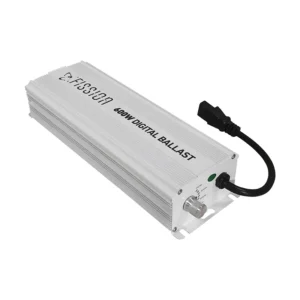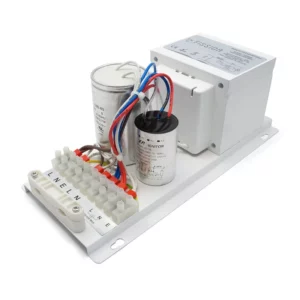Differences between electronic and electromagnetic ballasts

The grower can currently find two types of ballasts on the market that are based on different technologies and offer different possibilities. These are electronic and electromagnetic ballasts, and it is convenient to know their characteristics in order to know which one to choose.
In electromagnetic ballasts the operation is based on the magnetic field generated by a large coil of copper or aluminum wire wound on a core formed by metal plates in conjunction with a starter and a capacitor. These elements, which thanks to their electrical qualities make the device do its job, also have a collateral effect, in many cases impractical. That coil and core are the ‘culprits’ that cause the ballast, when operating, to radiate a large amount of heat. In reality, this heat is natural energy losses that occur in any coil-metal core assembly in operation, which reduces their energy efficiency. For this reason, many electromagnetic ballast models have an overheating protection system that automatically shuts off the bulb if the temperature of the device reaches a predefined maximum that could damage the materials of which it is composed. In addition, in the best case, the weight of the ballast will be over six kilos for the 600 watt models, which makes it much more difficult to move it from one place to another.
In the case of electronic ballasts, the operation is totally different even though the purpose is the same. In these devices, a microprocessor-controlled circuit generates a pulsating current that is delivered to the bulb with magnetic characteristics that make it equivalent to a high-frequency sinusoidal alternating voltage. In the market you can find ballasts with output frequencies ranging from 10 to 60KHz and in some models even higher. By basing its operation on this pulsating current, generated under a fixed pattern by the microprocessor, the ballast weighs much less than an electromagnetic ballast, since it eliminates the large copper coil and its metal core. And, in addition, since it does not need those almost 6 kg of materials with so much capacity to radiate heat, but another series of electronic components, (which make it save around 50% of the weight in comparison), it never reaches the high temperatures of its electromagnetic competitors.
-
 Fission 600W electronic ballast
Fission 600W electronic ballast -
 Fission open ballast53,00 €
Fission open ballast53,00 € -
 EMB ballast39,00 € – 69,55 €
EMB ballast39,00 € – 69,55 €
Another advantage offered by electronic ballasts, apart from the possibility of regulating power consumption through its potentiometer, is that they are less dependent on fluctuations that may occur in the power grid. In the case of electromagnetics, any variation is immediately transferred to the output, since, for example, a 10% drop in the potential difference in the network generates a proportionally weaker magnetic field and, in turn, produces a drop in the power that is delivered to the bulb. In addition, thanks to the high output frequency, the effective light supply to the plants is higher.
This is due to the operation of the discharge lamps that, when connected, cannot produce light at times of zero potential difference of the input sinusoidal alternating current, an effect that, although the human eye is not able to appreciate, we have all seen when trying to take pictures in our crop in the form of black stripes that occur in these. In electronic ballasts, the high output frequency causes the zero potential difference moment to occur many more times per second and its duration is much smaller, which makes the light produced by the lamp much more stable, more similar to natural sunlight.
In short, the electronic ballast makes any bulb produce more light, and more stable, than any electromagnetic ballast, which will naturally produce a rise in the P.A.R. radiation emitted by the lamp and, therefore, in the production of any optimized crop in which we change these electromagnetic ballasts for electronic ballasts. emitted by the lamp and, therefore, in the production of any optimized crop in which we change these electromagnetic ballasts by electronic, besides offering us the possibility of reducing at will the energy consumption of the same by means of its regulator in the first stages of the development of the plants, characteristic this one that in itself already does that it is a product easily amortizable according to this energy saving that we can implement with him.

No comments